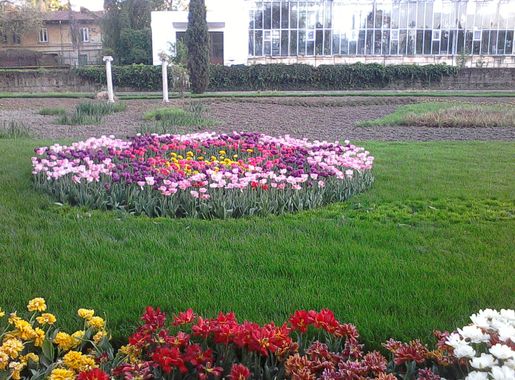
Craiova: A Journey Through Romania's Cultural Heartland
Discover Craiova, a captivating Romanian city where history blends with modern charm, offering rich cultural experiences, beautiful parks, and vibrant local life.
Nestled in the fertile plains of southern Romania, Craiova is a vibrant blend of rich history and modern charm. As the capital of the Dolj County, this bustling city offers a fascinating glimpse into Romania's past, while also showcasing its contemporary dynamism. From the impressive architectural marvels to the serene parks, Craiova promises a memorable experience for every traveler. One of the city's crown jewels is the Craiova Art Museum, housed in the stunning Jean Mihail Palace. The museum boasts an impressive collection of Romanian art, including works by the famous sculptor Constantin Brâncuși. Walking through its halls, you can almost feel the artistic spirit that has shaped the city's cultural landscape. Nature enthusiasts will find solace in the beautiful Nicolae Romanescu Park, one of the largest and most picturesque parks in Eastern Europe. With its tranquil lakes, charming bridges, and lush greenery, the park provides a perfect escape from the urban hustle and bustle. Don't miss the enchanting suspension bridge and the small zoo, which are favorites among both locals and tourists. For a taste of local life, head to the bustling Central Market, where you can sample regional delicacies and fresh produce. The market is a lively hub of activity, offering a sensory feast of sights, sounds, and flavors. It's the perfect place to immerse yourself in the everyday life of Craiova's residents and perhaps pick up a unique souvenir or two. Craiova also boasts a vibrant nightlife, with a variety of bars, clubs, and restaurants to explore. Whether you're in the mood for traditional Romanian cuisine or international dishes, the city's culinary scene has something to satisfy every palate. As the sun sets, the city's streets come alive with music and laughter, offering a perfect end to a day of exploration.
Local tips in Craiova
- Visit the Craiova Art Museum early in the morning to avoid crowds.
- Wear comfortable shoes as you explore Nicolae Romanescu Park; it's vast and best enjoyed on foot.
- Try traditional Romanian dishes like sarmale and mici at local restaurants for an authentic culinary experience.
- Use public transportation or rent a bike to get around the city efficiently.
- Keep some cash handy as some smaller shops and markets may not accept credit cards.
Craiova: A Journey Through Romania's Cultural Heartland
Nestled in the fertile plains of southern Romania, Craiova is a vibrant blend of rich history and modern charm. As the capital of the Dolj County, this bustling city offers a fascinating glimpse into Romania's past, while also showcasing its contemporary dynamism. From the impressive architectural marvels to the serene parks, Craiova promises a memorable experience for every traveler. One of the city's crown jewels is the Craiova Art Museum, housed in the stunning Jean Mihail Palace. The museum boasts an impressive collection of Romanian art, including works by the famous sculptor Constantin Brâncuși. Walking through its halls, you can almost feel the artistic spirit that has shaped the city's cultural landscape. Nature enthusiasts will find solace in the beautiful Nicolae Romanescu Park, one of the largest and most picturesque parks in Eastern Europe. With its tranquil lakes, charming bridges, and lush greenery, the park provides a perfect escape from the urban hustle and bustle. Don't miss the enchanting suspension bridge and the small zoo, which are favorites among both locals and tourists. For a taste of local life, head to the bustling Central Market, where you can sample regional delicacies and fresh produce. The market is a lively hub of activity, offering a sensory feast of sights, sounds, and flavors. It's the perfect place to immerse yourself in the everyday life of Craiova's residents and perhaps pick up a unique souvenir or two. Craiova also boasts a vibrant nightlife, with a variety of bars, clubs, and restaurants to explore. Whether you're in the mood for traditional Romanian cuisine or international dishes, the city's culinary scene has something to satisfy every palate. As the sun sets, the city's streets come alive with music and laughter, offering a perfect end to a day of exploration.
When is the best time to go to Craiova?
Iconic landmarks you can’t miss
Nicolae Romanescu Park
Explore Nicolae Romanescu Park, a magnificent urban park in Craiova, featuring picturesque landscapes, serene lakes, and delightful recreational activities.
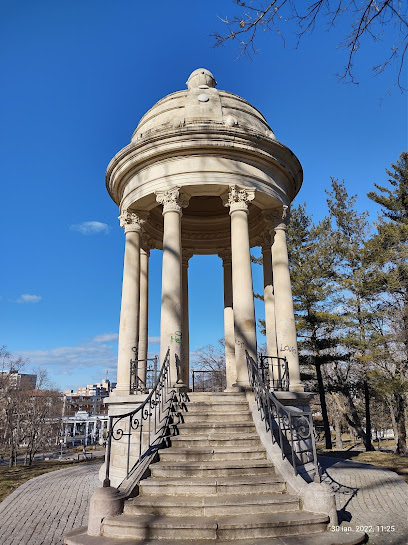
Zoo Park Craiova
Experience the beauty and diversity of wildlife at Zoo Park Craiova, a family-friendly destination nestled in the heart of Nicolae Romanescu Park.
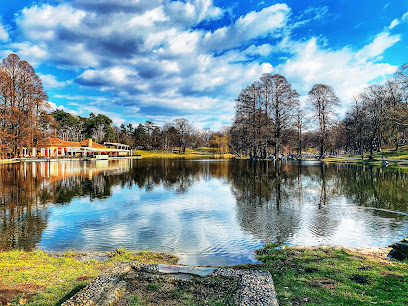
English Park
Explore the enchanting English Park in Craiova, a serene retreat filled with lush gardens and cultural events, perfect for a leisurely escape.
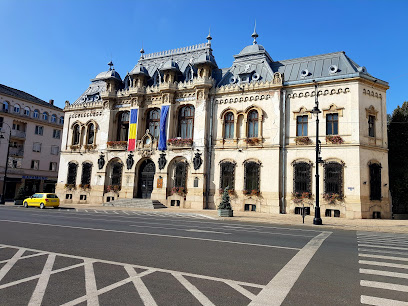
Craiova's Old Town
Explore Craiova's Old Town, a vibrant blend of history, culture, and culinary delights in the heart of Romania.
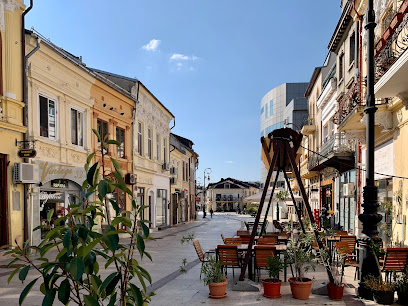
Puskin Park
Explore the tranquil beauty of Puskin Park in Craiova, a lush green oasis perfect for relaxation, picnics, and enjoying local culture.
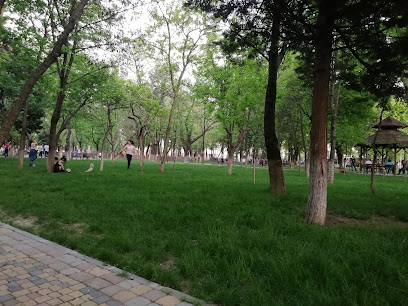
Musical Fountain
Experience the enchanting Musical Fountain in Craiova, where water, light, and music create a mesmerizing spectacle for all ages.
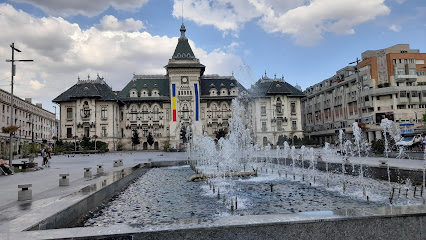
Oltenia's Museum of History and Archaeology
Uncover the historical gems of Oltenia at the Museum of History and Archaeology in Craiova, where Romania's past comes alive through captivating exhibits.
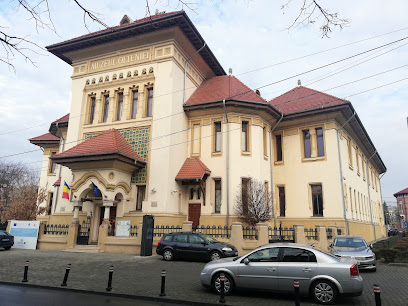
Castelul Fermecat
Explore the enchanting Castelul Fermecat in Craiova, a historical gem surrounded by the natural beauty of Parcul Nicolae Romanescu.
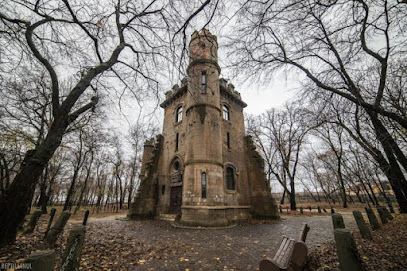
Administrative Palace of Craiova
Explore the stunning Administrative Palace of Craiova, a neoclassical masterpiece filled with history and architectural beauty in the heart of Romania.
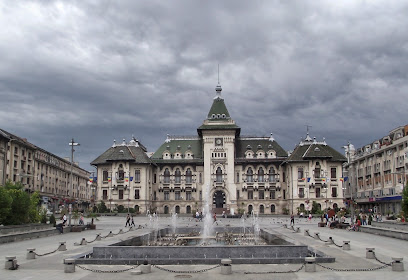
Oltenia Museum - Department of Natural Sciences
Explore the Oltenia Museum - Department of Natural Sciences, where ancient fossils and diverse ecosystems come to life in Craiova.
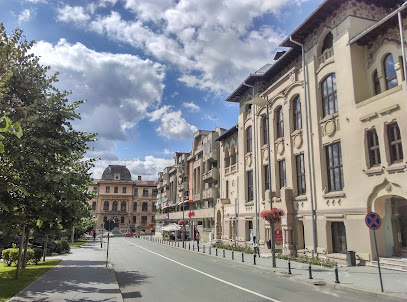
Oltenia's Museum of Ethnography
Explore the vibrant traditions and cultural heritage of Oltenia at the Museum of Ethnography in Craiova, a treasure trove of local history.
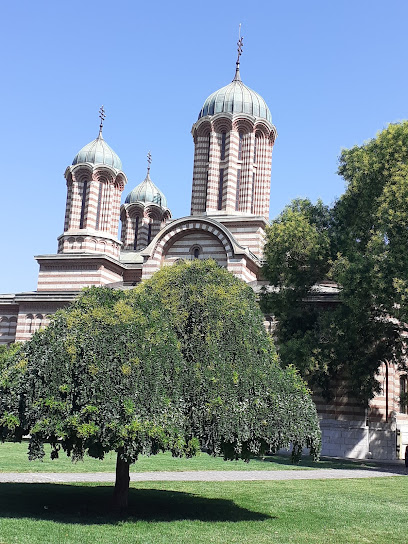
Suspended Bridge
Discover the Suspended Bridge in Craiova – a breathtaking architectural gem in Parcul Nicolae Romanescu, perfect for unforgettable photos and nature walks.
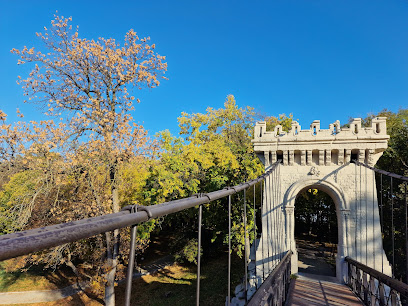
Jean Mihail Palace
Explore the exquisite Jean Mihail Palace in Craiova, a historical museum showcasing Romanian art amidst stunning architecture and serene gardens.
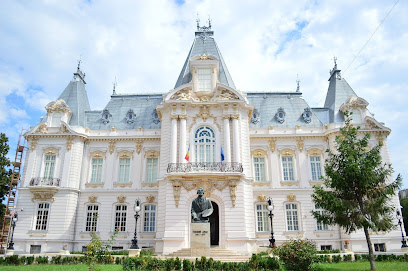
Parcul 1 Decembrie 1918
Explore the serene beauty of Parcul 1 Decembrie 1918, a lush urban oasis in Craiova perfect for relaxation, picnics, and cultural exploration.
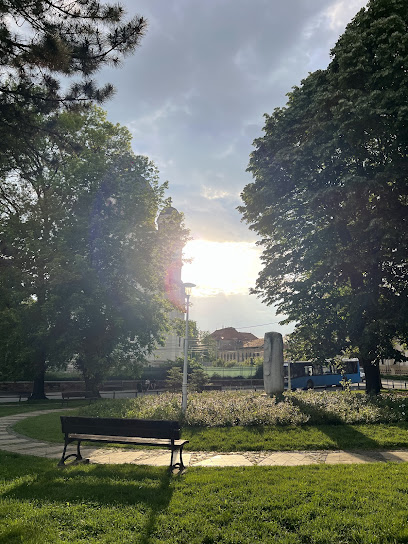
Carol I statue
Experience the grandeur of the Carol I statue in Craiova, a monumental tribute to Romania's royal history and a must-visit for every traveler.
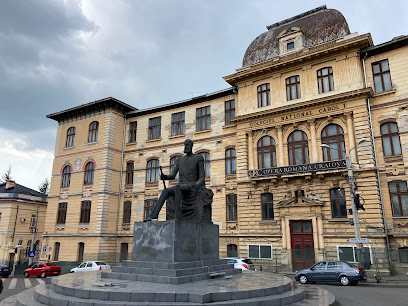
Unmissable attractions to see
Nicolae Romanescu Park
Discover the breathtaking beauty of Nicolae Romanescu Park in Craiova, a perfect blend of nature, history, and recreation.
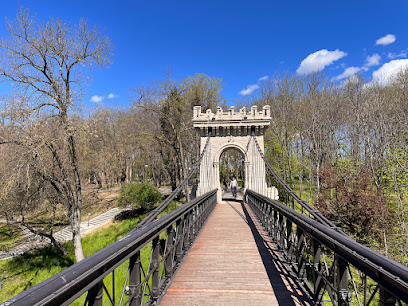
Zoo Park Craiova
Experience the magic of wildlife at Zoo Park Craiova, nestled in the stunning Parcul Nicolae Romanescu, perfect for families and nature lovers.
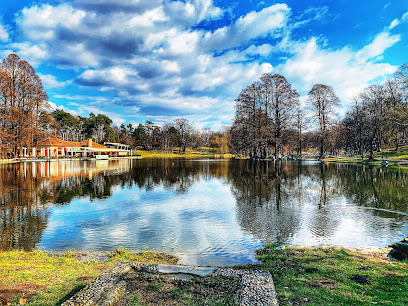
English Park
Explore the lush landscapes and cultural treasures of English Park in Craiova, an urban oasis perfect for relaxation and leisurely strolls.
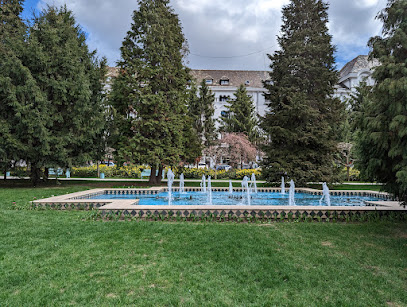
Marin Sorescu National Theater
Explore the Marin Sorescu National Theater in Craiova, Romania, where the essence of performing arts and rich cultural experiences await every visitor.
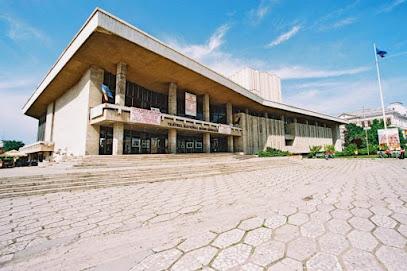
Parcul Tineretului
Explore Parcul Tineretului in Craiova - a serene park perfect for relaxation, recreation, and enjoying nature's beauty.
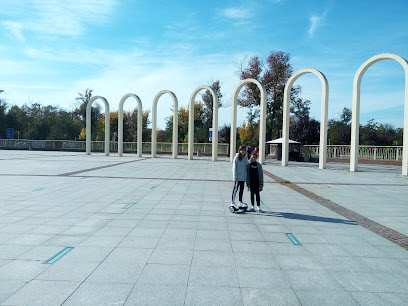
Puskin Park
Explore Puskin Park in Craiova, a beautiful green space perfect for relaxation, recreation, and cultural experiences amidst stunning natural surroundings.
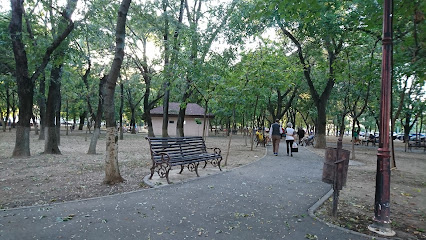
Craiova Art Museum
Explore the Craiova Art Museum: A treasure trove of Romanian and European art nestled in a stunning historic building.
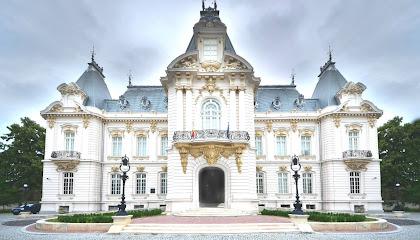
Musical Fountain
Discover the Musical Fountain in Craiova, where water, light, and music create a mesmerizing spectacle that enchants visitors day and night.
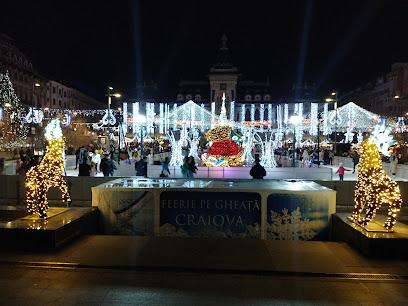
Parcul „Hanul doctorului”
Experience the tranquility of Parcul „Hanul doctorului” in Craiova, Romania, where nature and relaxation create the perfect escape.
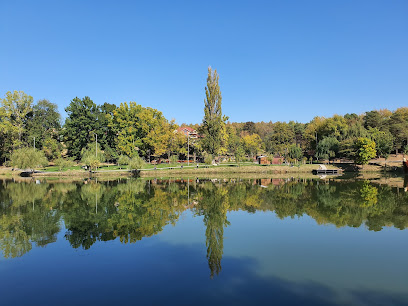
Castelul Fermecat
Experience the magical allure of Castelul Fermecat in Craiova, a captivating blend of history, architecture, and natural beauty.
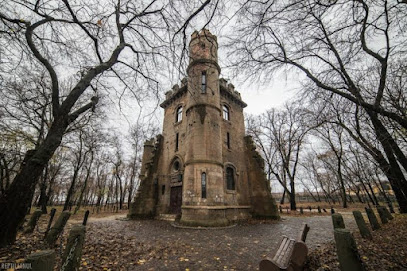
Administrative Palace of Craiova
Discover the grandeur of the Administrative Palace of Craiova, a stunning neoclassical monument rich in history and architectural beauty.
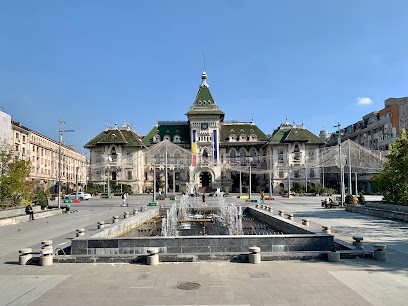
Oltenia Museum - Department of Natural Sciences
Explore Romania's diverse natural heritage at the Oltenia Museum - Department of Natural Sciences, a family-friendly attraction in Craiova.
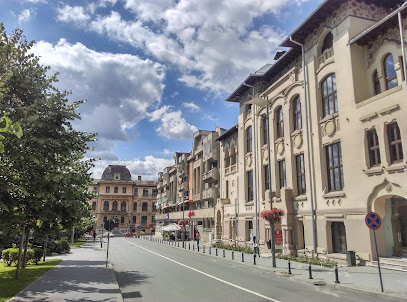
Oltenia's Museum Of Ethnography
Explore the cultural richness of Romania at Oltenia's Museum of Ethnography, where history and tradition come alive in every exhibit.

Suspended Bridge
Explore the breathtaking Suspended Bridge in Craiova's Parcul Nicolae Romanescu – an architectural marvel amidst serene natural beauty.
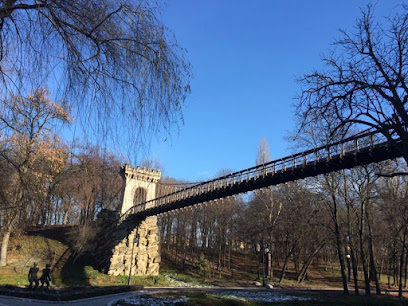
Grădina Rovine
Explore Grădina Rovine, a tranquil park in Craiova, Romania, perfect for relaxation, nature walks, and cultural events amidst beautiful landscapes.

Essential places to dine
Restaurant Casa Ghincea
Discover authentic Romanian cuisine at Restaurant Casa Ghincea in Craiova – where family-friendly dining meets rich culinary tradition.
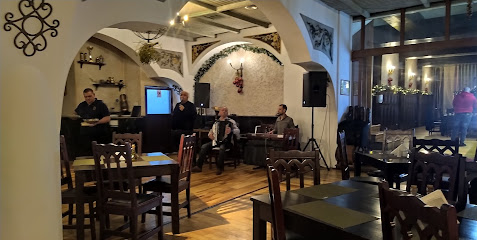
Restaurant Galaxy
Experience authentic Romanian cuisine at Restaurant Galaxy in Craiova - where tradition meets taste in every dish.
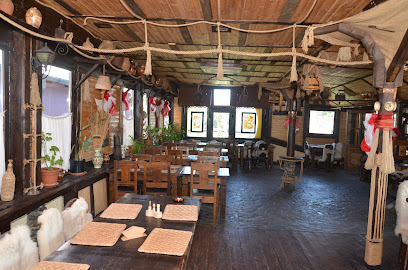
The Temple Bar
Experience authentic Irish hospitality at The Temple Bar in Craiova - where great food meets lively ambiance.

Big Ben
Experience culinary delights at Big Ben, a beloved restaurant in Craiova offering diverse menus and inviting ambiance for all visitors.
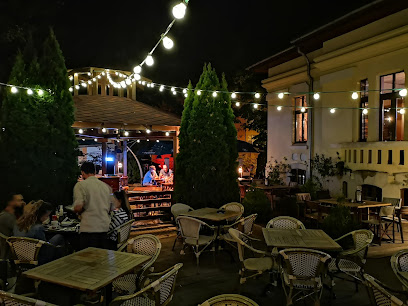
Iberico
Experience authentic Spanish tapas at Iberico in Craiova - where every dish tells a story.
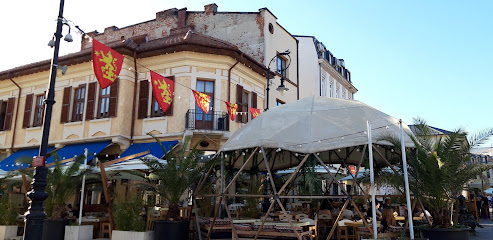
Craft
Experience culinary artistry at Craft in Craiova—where fresh local ingredients meet innovative Romanian cuisine.
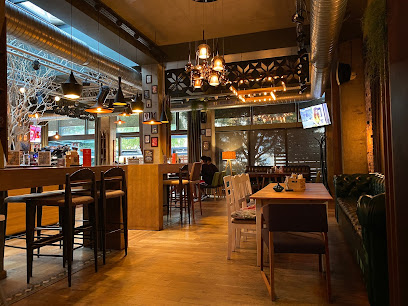
Epoca Steak House & Wine Bar Restaurant
Discover culinary excellence at Epoca Steak House & Wine Bar in Craiova – where gourmet flavors meet exquisite wines for an unforgettable dining experience.
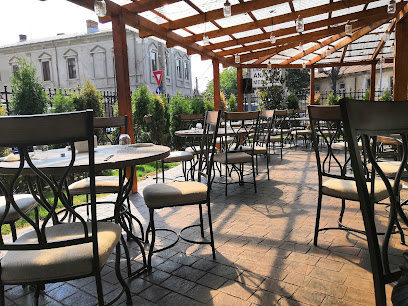
Curtea Berarilor Craiova
Discover Curtea Berarilor Craiova - A unique brewpub offering craft beers and delectable dishes in a lively atmosphere.
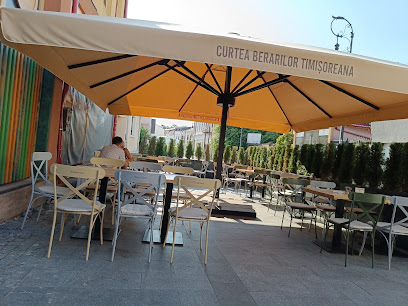
La Rocca Restaurant
Experience the rich flavors of Romania at La Rocca Restaurant in Craiova - where tradition meets culinary excellence.
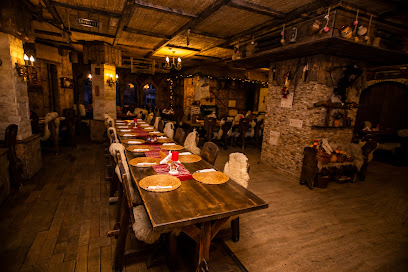
Downtown - Contemporary Bar & Food
Discover the vibrant flavors of Craiova at Downtown - Contemporary Bar & Food, where modern dining meets local charm.

One Garden
Experience authentic Spanish tapas and vibrant cocktails at One Garden in Craiova - your gateway to flavorful culinary adventures.
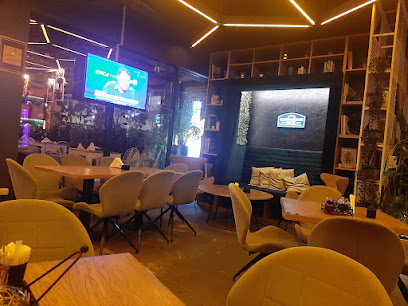
The Manor Restaurant & Lounge
Discover exquisite dining at The Manor Restaurant & Lounge in Craiova - where local flavors meet international cuisine in an elegant setting.
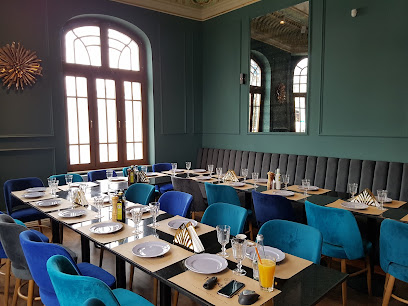
Hotel Restaurant Royal Craiova
Discover authentic Romanian cuisine at Hotel Restaurant Royal Craiova - where comfort meets culinary excellence in every dish.
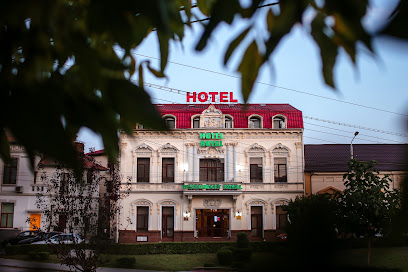
Bulevard
Experience culinary excellence at Bulevard in Craiova—where local flavors meet international cuisine in a charming setting.
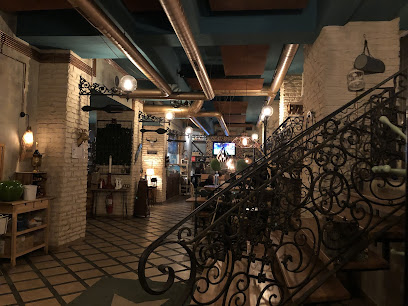
Restaurant Mignon
Experience authentic Mediterranean tapas and local flavors at Restaurant Mignon in Craiova - a culinary gem waiting to be discovered.
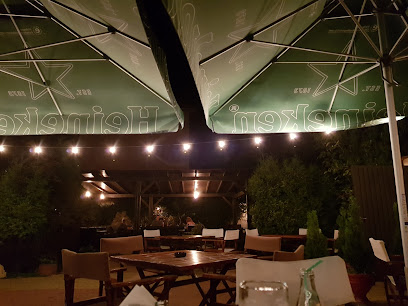
Markets, malls and hidden boutiques
Electroputere Mall
Discover the vibrant shopping experience at Electroputere Mall in Craiova, where modern retail meets local culture and entertainment.
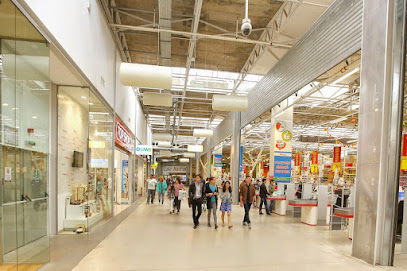
Mercur Center
Explore Craiova's Mercur Center, a dynamic shopping mall with diverse stores, delicious dining, and family-friendly entertainment options.

Leroy Merlin Craiova Craiovita
Explore Leroy Merlin Craiova, your ultimate destination for home improvement, DIY projects, and garden supplies in the heart of Romania.
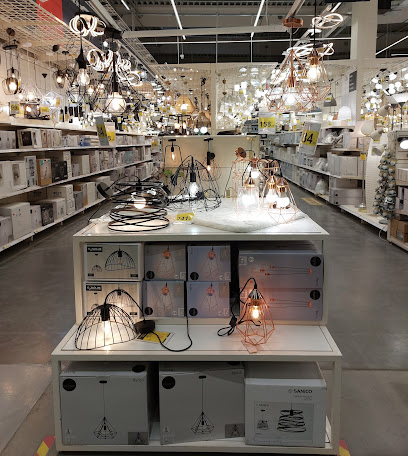
Piața Centrală din Craiova
Discover the vibrant Piața Centrală din Craiova, where fresh produce and local culture converge in a lively market atmosphere.
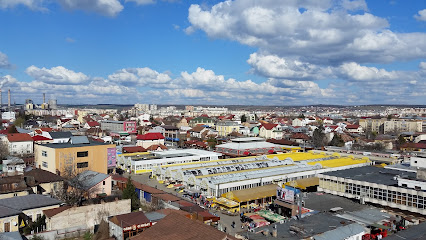
Promenada Mall - Craiova
Explore the diverse shopping, dining, and entertainment options at Promenada Mall in Craiova, a must-visit destination for all travelers.
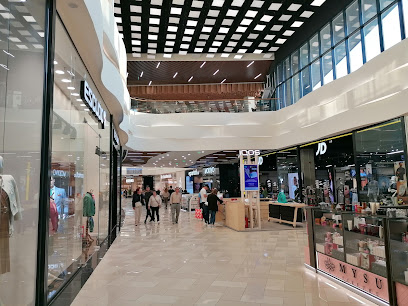
Mihai Viteazul Square
Experience the vibrant atmosphere of Mihai Viteazul Square, the heart of Craiova, filled with shops, cafes, and cultural events.
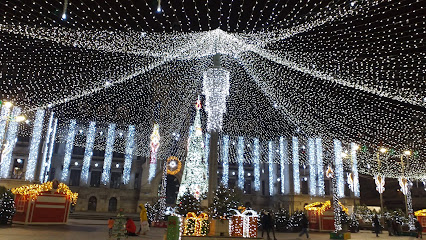
Big Family Market
Discover the vibrant Big Family Market in Craiova, a supermarket filled with local and international delights to enhance your culinary adventures.
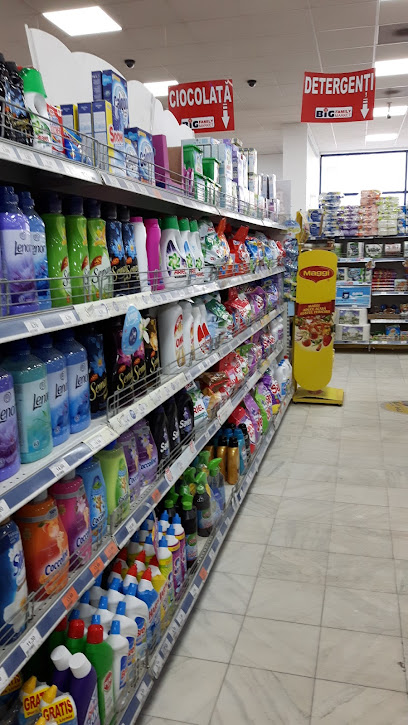
Aliss Shopping City
Explore Aliss Shopping City: Craiova's vibrant shopping mall featuring diverse stores, dining options, and entertainment for all visitors.
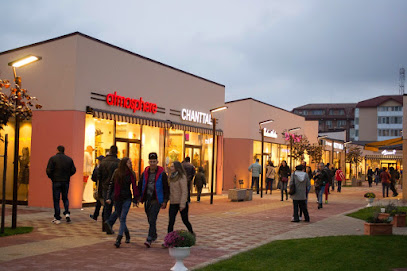
Fumezi.com Craiova
Explore Fumezi.com Craiova, the ultimate vaporizer destination with a diverse selection and expert guidance for every vaping enthusiast.
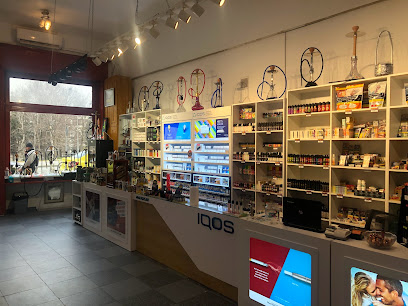
Scandinavia Second-hand
Explore Scandinavia Second-hand in Craiova for unique, sustainable fashion finds that tell a story and support eco-friendly practices.
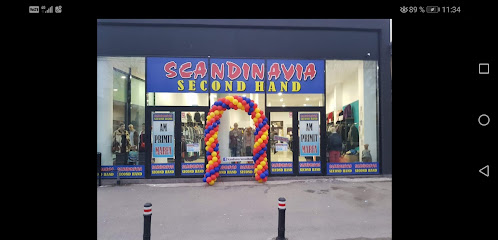
Bad Habits
Experience the cozy charm and exquisite coffee at Bad Habits Cafe, a must-visit in Craiova for every traveler.
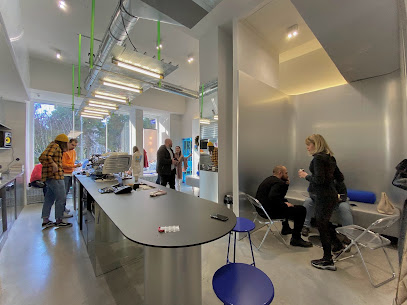
Harvest Specialty Coffee
Discover the rich flavors of specialty coffee at Harvest Specialty Coffee in Craiova, a must-visit for coffee lovers seeking quality and ambiance.
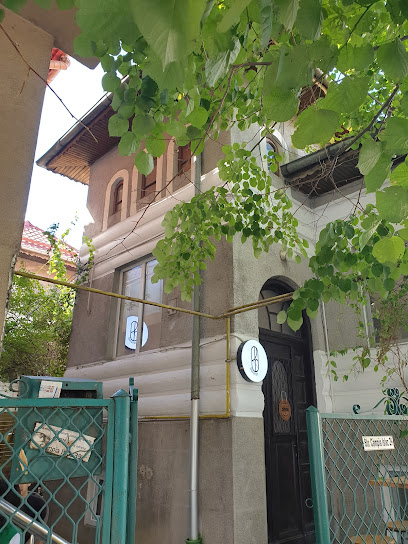
Cadouri•Dulciuri•Flori
Discover the perfect blend of coffee, flowers, and gifts at Cadouri•Dulciuri•Flori in Craiova, your ideal stop for a delightful experience.
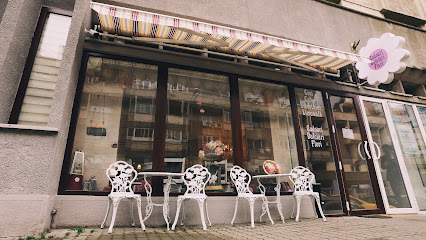
Zerin Market
Explore Zerin Market in Craiova: Your go-to department store for fashion, home goods, and a taste of local culture.
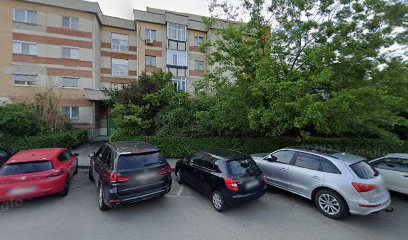
Livrare flori si cadouri raftulcucadouri.ro
Explore Raftul cu Cadouri in Craiova for exquisite flowers and unique gift baskets that celebrate every occasion with elegance and charm.
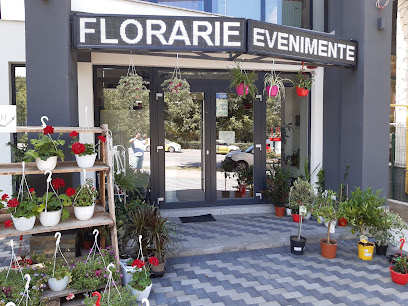
Essential bars & hidden hideouts
The Temple Bar
Discover the vibrant atmosphere of The Temple Bar in Craiova, where Irish hospitality meets Romanian culture in a lively dining experience.
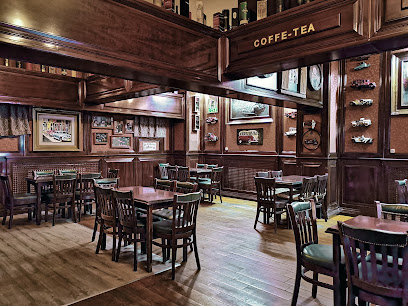
Old Court Biergarten
Experience the vibrant atmosphere and delightful flavors at Old Court Biergarten, Craiova's premier lounge for craft beers and local cuisine.
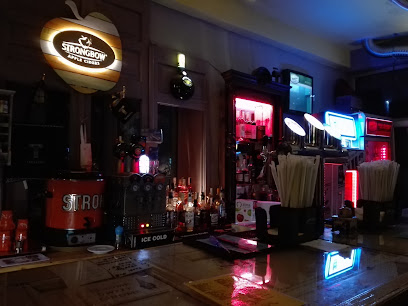
Soho
Experience the lively atmosphere of Soho Pub in Craiova, perfect for great drinks and local entertainment.
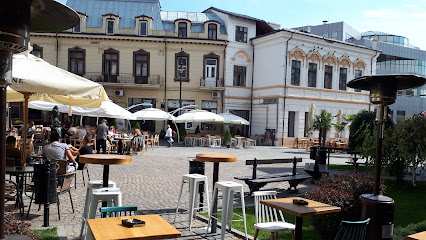
Steam Punk
Experience the unique blend of tapas, cocktails, and an electrifying nightlife at Steam Punk, Craiova's premier bar and night club.
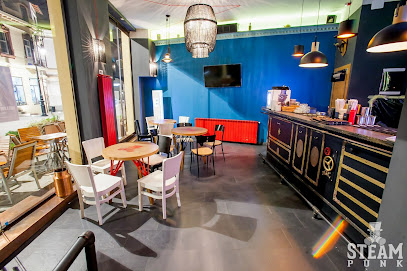
Toska
Experience the vibrant nightlife of Craiova at Toska, a lively bar with an extensive drink menu and a welcoming atmosphere.
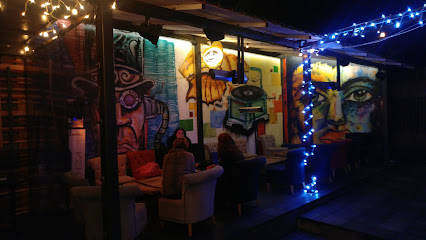
Miki's Pub
Discover Miki's Pub in Craiova – where lively ambiance meets delicious drinks and food, perfect for unwinding after a day of exploration.
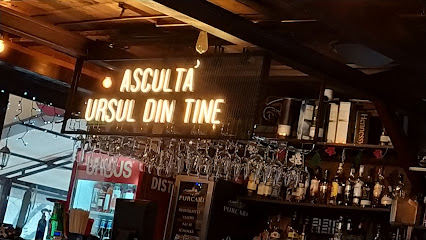
Vicii Si Capricii
Discover the vibrant atmosphere and delicious offerings of Vicii Si Capricii, a top gastropub in Craiova known for its local flavors and friendly service.
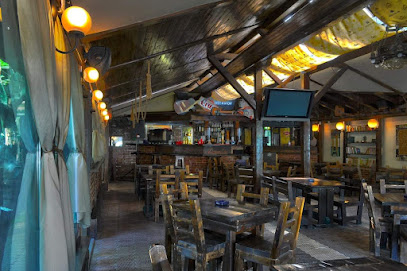
Fado Irish Pub
Fado Irish Pub in Craiova offers an authentic Irish experience with delicious food, lively music, and a welcoming atmosphere for all visitors.
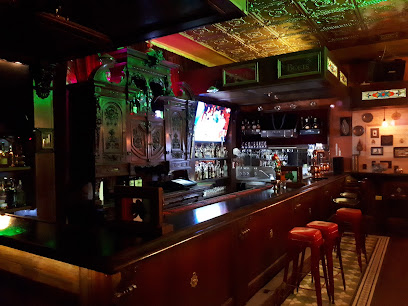
Loof
Discover the lively ambiance of Loof in Craiova, where great drinks and music create the perfect night out.
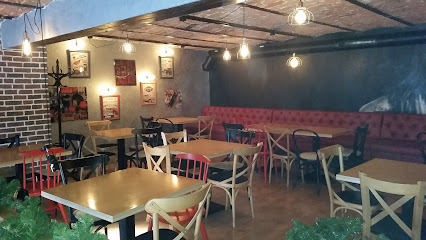
Tipsy
Discover the vibrant atmosphere of Tipsy, Craiova's top lounge, offering a delightful mix of cocktails and cozy ambiance for every visitor.
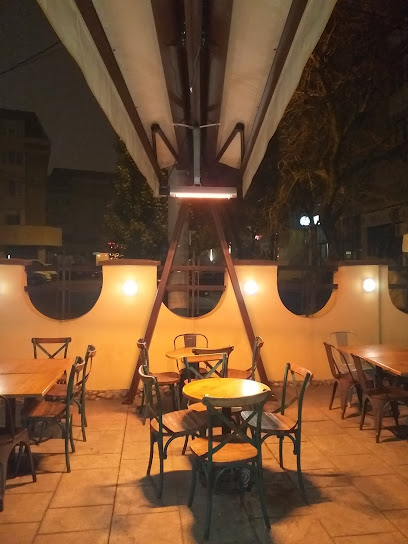
Fabrrica
Experience the lively ambiance and diverse drink selection at Fabrrica, Craiova's trendy bar for tourists and locals alike.
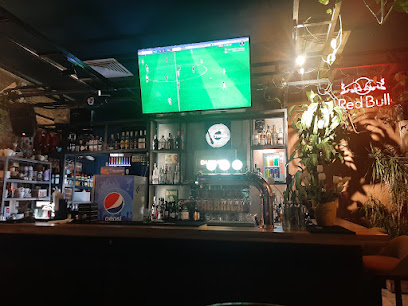
The 20's
Experience Craiova's nightlife at The 20's, where vibrant drinks and a lively atmosphere await every visitor.
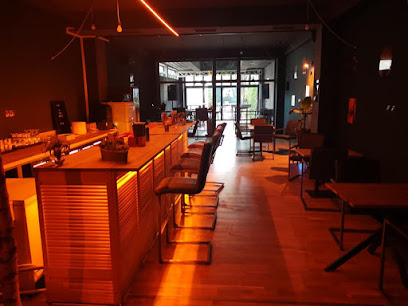
Da Vinci
Discover the cozy charm of Da Vinci in Craiova, a perfect bar for enjoying local wines and crafted cocktails in a welcoming atmosphere.
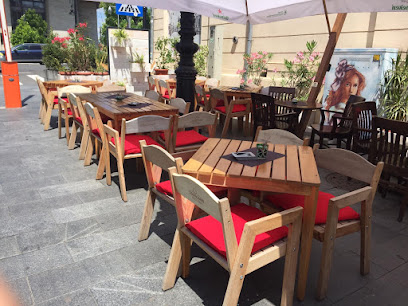
Buddha Club
Explore the vibrant nightlife of Craiova at Buddha Club, where stylish decor meets a lively atmosphere and a diverse drink menu.
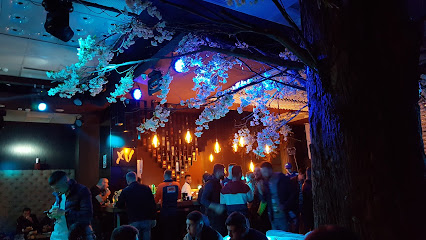
Essenza Bar & Restaurant
Discover the vibrant flavors and inviting atmosphere at Essenza Bar & Restaurant in Craiova, where every meal is a delightful experience.
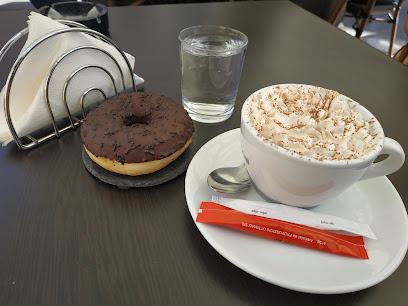
Local Phrases
-
- HelloSalut
[sa-ˈlut] - GoodbyeLa revedere
[la re.veˈde.re] - YesDa
[da] - NoNu
[nu] - Please/You're welcomeTe rog
[te rog] - Thank youMultumesc
[mul.ˈtu.mesk] - Excuse me/SorryScuzați-mă
[sku.zaʦi.ˈmə] - How are you?Ce faci?
[ʧe ˈfaʧi] - Fine. And you?Bine. Și tu?
[bi.ne ʃi tu] - Do you speak English?Vorbiți engleză?
[vor.ˈbiʦi en.ɡle.zə] - I don't understandNu înțeleg
[nu ˌɯn.t͡se.ˈleɡ]
- HelloSalut
-
- I'd like to see the menu, pleaseAș dori să văd meniul, vă rog
[aʃ doˈri sə vad me.ˈni.ul və roɡ] - I don't eat meatNu mănânc carne
[nu mə.ˈnɨŋk ˈkar.ne] - Cheers!Noroc!
[ˈnorok] - I would like to pay, pleaseAș dori să plătesc, vă rog
[aʃ doˈri sə plə.ˈtesk və roɡ]
- I'd like to see the menu, pleaseAș dori să văd meniul, vă rog
-
- Help!Ajutor!
[a.ʒuˈtor] - Go away!Du-te!
[du.te] - Call the Police!Sună la Poliție!
[su.nə la po.ˈlitsje] - Call a doctor!Sună un doctor!
[su.nə un dokˈtor] - I'm lostM-am rătăcit
[mam rətə.ˈʧit] - I'm illSunt bolnav
[sunt bol.ˈnav]
- Help!Ajutor!
-
- I'd like to buy...Aș dori să cumpăr...
[aʃ doˈri sə kum.ˈpar] - I'm just lookingDoar ma uit
[do.ar ma uit] - How much is it?Cât costă?
[kɨt kosˈtə] - That's too expensiveEste prea scump
[es.te pre.ə skump] - Can you lower the price?Puteți să scădeți prețul?
[puˈteʦ sə ˈskə.de.ʦi pret͡sul]
- I'd like to buy...Aș dori să cumpăr...
-
- What time is it?Cât e ceasul?
[kɨt e ˈʧe̯a.sul] - It's one o'clockEste ora unu
[es.te o.ra unu] - Half past (10)Jumătate (10)
[ʒu.məˈta.te (10)] - MorningDimineața
[di.miˈne̯at͡sa] - AfternoonDupă-amiază
[du.pə a.mjaˈza] - EveningSeara
[se̯a.ra] - YesterdayIeri
[je.ri] - TodayAstăzi
[as.təz] - TomorrowMâine
[mɨ.ˈne] - 1Unu
[u.nu] - 2Doi
[doj] - 3Trei
[trej] - 4Patru
[pa.tru] - 5Cinci
[ʧint͡ʃ] - 6Șase
[ʃa.se] - 7Șapte
[ʃap.te] - 8Opt
[opt] - 9Nouă
[no.uə] - 10Zece
[ˈʦe.ʧe]
- What time is it?Cât e ceasul?
-
- Where's a/the...?Unde este unul/o...
[ˈun.de es.te u.nul/o] - What's the address?Care este adresa?
[ka.re es.te a.dre.sa] - Can you show me (on the map)?Mă puteți arăta (pe hartă)?
[mə puˈteʦi aˈrə.ta (pe harˈtə)] - When's the next (bus)?Când este următorul (autobuz)?
[kɨnd es.te urˈmə.to.rul (au.toˈbuz)] - A ticket (to ....)Un bilet (către ....)
[un biˈlet (kə.tre)]
- Where's a/the...?Unde este unul/o...
History of Craiova
-
Craiova's history stretches back to ancient times, with archaeological evidence suggesting that the area has been inhabited since the Neolithic era. The region was originally home to the Dacians, a Thracian tribe known for their warrior culture and intricate craftsmanship. The remnants of their settlements and fortifications can still be seen in and around the city, offering a glimpse into Craiova's ancient roots.
-
During the medieval period, Craiova emerged as an important center of commerce and military strategy. By the 15th century, it became the seat of the Ban of Oltenia, a high-ranking official in the Wallachian principality. Craiova's strategic location made it a focal point for trade routes and military campaigns, contributing to its growth and prosperity.
-
In the 16th and 17th centuries, Craiova came under Ottoman rule, like much of the region. The city's administrators and inhabitants had to navigate the complexities of Ottoman governance, which included paying tribute and hosting Ottoman garrisons. This period saw a blend of local and Ottoman architectural styles, some of which are still visible in Craiova's historic buildings.
-
Craiova played a significant role in the 19th-century movement for Romanian independence. The city was a hotbed of revolutionary activity, with many residents participating in the 1821 uprising led by Tudor Vladimirescu. Craiova's contributions to the fight for independence continued throughout the century, culminating in the establishment of the Kingdom of Romania in 1881.
-
The late 19th and early 20th centuries saw Craiova undergo rapid industrialization and modernization. The construction of railways and factories transformed the city into an industrial hub. This period also saw the development of educational and cultural institutions, including the University of Craiova, founded in 1947, which has since become a major center of learning and research.
-
Craiova, like the rest of Romania, was deeply affected by the events of the World Wars. During World War I, the city was occupied by Central Powers forces. In World War II, Craiova faced bombings and occupation once again, this time by Axis and later Soviet forces. The post-war period brought significant political changes, with Romania falling under communist rule until the revolution of 1989, which Craiova's residents actively supported.
-
In recent decades, Craiova has experienced a cultural renaissance. The city is known for its vibrant arts scene, including the Marin Sorescu National Theatre and the Oltenia Philharmonic Orchestra. Craiova is also famous for its historic sites, such as the Nicolae Romanescu Park, one of the largest urban parks in Eastern Europe, and the Art Museum housed in the stunning Jean Mihail Palace.
Craiova Essentials
-
Craiova is located in the southwestern part of Romania and is accessible by various means of transportation. The nearest airport is Craiova International Airport (CRA), which offers domestic and some international flights. From the airport, you can take a taxi or a shuttle service to the city center, which is about 7 kilometers away. Alternatively, you can reach Craiova by train; the city is well-connected to major Romanian cities like Bucharest and Timisoara through the national railway network. Buses and coaches also operate regularly between Craiova and other major cities in Romania.
-
Craiova has a well-developed public transportation system that includes buses and trams operated by RAT Craiova. Tickets can be purchased at kiosks or directly from the driver. Taxis are also widely available and relatively affordable. For those who prefer to drive, car rental services are available at the airport and in the city. Biking is another option, with bike rental services and bike lanes available in certain parts of the city.
-
The official currency in Romania is the Romanian Leu (RON). Credit and debit cards are widely accepted in most hotels, restaurants, and shops in Craiova. However, it's advisable to carry some cash for smaller establishments and public transport. ATMs are plentiful throughout the city, and currency exchange offices are available in the city center and at the airport.
-
Craiova is generally a safe city for tourists, but like any urban area, it is wise to take standard precautions. Petty theft, such as pickpocketing, can occur in crowded areas like markets and public transport. Areas like the Craiovita Noua and Romanesti neighborhoods have higher crime rates and should be avoided, especially at night. Always keep an eye on your belongings and avoid displaying valuables publicly.
-
In case of emergency, dial 112 for immediate assistance from police, fire, or medical services. Craiova has several hospitals, including the County Emergency Hospital, which provides comprehensive medical care. Pharmacies are also widely available for minor health issues. It's advisable to have travel insurance that covers medical emergencies.
-
Fashion: Do dress modestly, particularly when visiting religious sites. Avoid overly casual or revealing clothing. Religion: Do respect religious customs and traditions. When visiting churches, dress conservatively and follow any posted guidelines. Public Transport: Do be considerate and offer your seat to elderly passengers. Don't eat or drink on public transport. Greetings: Do greet people with a handshake. In formal settings, use titles and last names until invited to use first names. Eating & Drinking: Do try local dishes and accept hospitality graciously. Don't refuse food or drink offerings, as it may be considered impolite.
-
To experience Craiova like a local, visit the Central Market (Piata Centrala) for fresh produce and local delicacies. Stroll through Nicolae Romanescu Park, one of the largest urban parks in Eastern Europe. Attend a performance at the Marin Sorescu National Theatre or the Oltenia Philharmonic for a dose of local culture. Engage with locals, who are generally friendly and willing to share insights about their city.
Trending Landmark in Craiova
-
Nicolae Romanescu Park
-
Zoo Park Craiova
-
English Park
-
Craiova's Old Town
-
Puskin Park
-
Musical Fountain
-
Oltenia's Museum of History and Archaeology
-
Castelul Fermecat
-
Administrative Palace of Craiova
-
Oltenia Museum - Department of Natural Sciences
-
Oltenia's Museum of Ethnography
-
Suspended Bridge
-
Jean Mihail Palace
-
Parcul 1 Decembrie 1918
-
Carol I statue
Nearby Cities to Craiova
-
Things To Do in Târgu Jiu
-
Things To Do in Drobeta-Turnu Severin
-
Things To Do in Râmnicu Vâlcea
-
Things To Do in Pitesti
-
Things To Do in Pleven
-
Things To Do in Ruse
-
Things To Do in Bucharest
-
Things To Do in Deva
-
Things To Do in Niš
-
Things To Do in Brasov
-
Things To Do in Gabrovo
-
Things To Do in Sighisoara
-
Things To Do in Smederevo
-
Things To Do in Kragujevac
-
Things To Do in Pančevo


